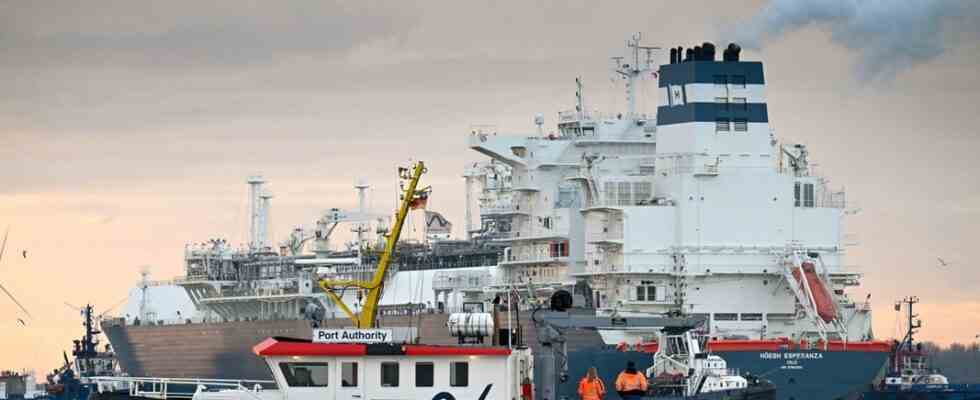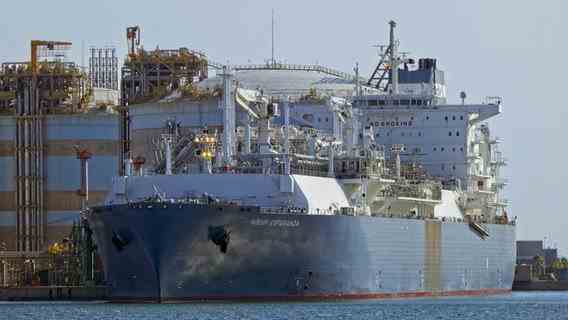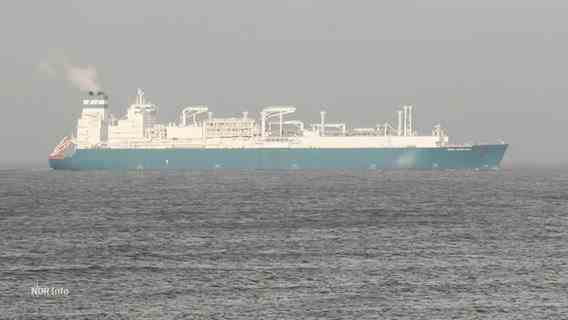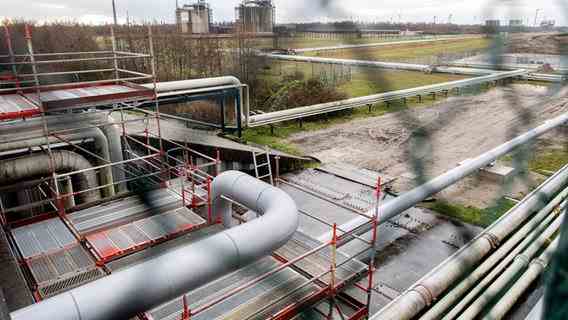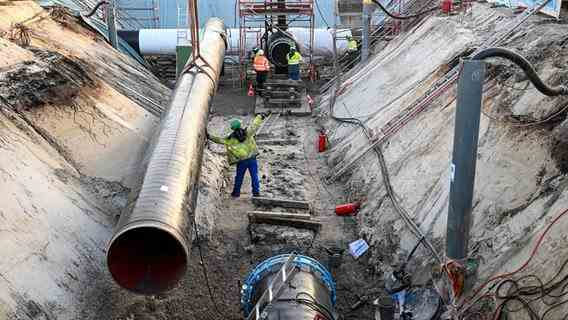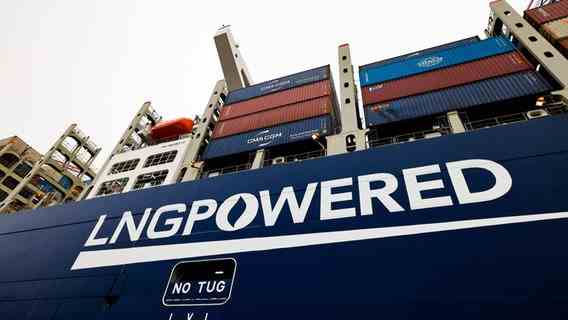Status: 15.12.2022 4:30 p.m
The “Höegh Esperanza” has moored at the new LNG pier in Wilhelmshaven with great safety precautions. The ship is the heart of the first LNG terminal in Germany.
In the afternoon, the approximately 300 meter long special ship reached the Jade off Wilhelmshaven and headed for its future berth at a newly built jetty north of the deep-water port JadeWeserPort. Numerous police forces secure the site on the North Sea near the coastal town of Hooksiel – on water, on land and in the air. In addition to police helicopters and boats from the water police that accompanied the “Höegh Esperanza”, special forces are also on site. The public, however, was not allowed.
Police: No concrete danger
Disruptive actions by climate activists had been feared in advance – but this did not happen on Thursday. There is also no concrete danger, it said at noon. “We have no knowledge that there should be disturbances today,” said a police spokesman.
videos
Closures apply until after the opening ceremony
Irrespective of this, the safety precautions should continue to be upheld. Protests are expected in particular on Saturday, when the opening ceremony of the terminal is planned. Among others, Chancellor Olaf Scholz (SPD), Federal Minister of Economics Robert Habeck (Greens) and Lower Saxony’s Prime Minister Stephan Weil (SPD) have been announced. In the vicinity of the Voslapper Groden handling facility of the terminal operator Uniper, several roads are closed up to and including Saturday – especially in the Baederstrasse area. In addition, a drone flight ban applies within a radius of 2.5 kilometers.

“Höegh Esperanza” will be operational before Christmas
With the arrival of the ship, the Wilhelmshaven LNG terminal is on the home straight. On Thursday in a week (December 22), gas is to be fed into the German grid from the terminal for the first time. The 294 meter long and 46 meter wide “Höegh Esperanza” is used as a floating tank and for evaporating the liquid natural gas delivered: The LNG is converted into gas while still on board and pumped ashore. The “Höegh Esperanza” already brings 170,000 cubic meters of liquefied natural gas. The ship is to remain permanently at the pier in Wilhelmshaven and serve as a floating platform to land LNG delivered by tankers and convert it back into a gaseous state. From mid-January, further tankers are to deliver LNG to Wilhelmshaven.
Environmentalists criticize the discharge of chlorine into the North Sea
Environmentalists criticize the fact that the “Höegh Esperanza” is planned as the first import terminal for LNG (Liquefied Natural Gas). Because in 2019 Australian authorities had rejected the ship because its pipelines had to be kept free with the help of chlorine. This is then routed unexplained into the North Sea near Wilhelmshaven. It is said to be around 35 tons of chlorine per year. The Wadden Sea will be polluted, even if the chlorine is greatly diluted, environmentalists warn. Environmental organizations such as BUND and NABU have announced that they will carefully examine the permits that have been publicly available since Monday – and reserve the right to sue.
Further information
Environment Minister Meyer: Limit values are being observed
Lower Saxony’s Ministry of the Environment refers to an intensive examination of the environmental and safety standards by the authorities. All applicable limit values would be complied with, said Environment Minister Christian Meyer (Greens). Discharges into the sea would be kept as low as possible. The aquatic ecological monitoring will also be “intensified in order to rule out any deterioration in the environmental situation,” says Meyer. Environmentalists counter that the planned water monitoring is “just a drop in the ocean,” says Holger Buschmann, state chairman of NABU Lower Saxony. The habitat of numerous animal and plant species, some of which are already endangered, in the middle of the UNESCO World Heritage Wadden Sea will be destroyed.
Further information


